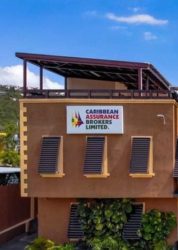The Statistical Institute of Jamaica (Statin) is confirming that the Jamaican economy recorded growth of 0.5 per cent in the third quarter of 2013 when compared to the similar quarter of 2012.
Earlier in the year, Statin reported that the Jamaican economy declined by 0.1 per cent in the second quarter and declined by 1.3 per cent in the first quarter of 2013. To achieve positive growth for the calendar year would require growth rate of nearly twice the performance of the third quarter or close to 1 percent. Quite a bit of the growth in the latest quarter is a recovery from the negative impact that Hurricane Sandy had on the economy, particularly the agricultural sector, rather than improved performance from ongoing economic activities.
Statin, the body changed with gathering economic and social data on behalf of Government of Jamaica, said the third quarter performance resulted mainly from a 2.2 per cent increase in output of the Goods Producing industries as the Services industries declined by 0.1 per cent.
Within the Goods Producing Industries, all industries except Manufacture recorded increased output levels. Agriculture, Forestry & Fishing grew by 5.4 per cent and this was the first quarter of growth recorded by this industry since the passage of Hurricane Sandy. The Mining & Quarrying and Construction industries grew by 6.4 per cent and 2.1 per cent respectively. The Manufacture industry however, declined by 0.9 per cent.
There were mixed performances within the Services industries. Increased levels of output were recorded for Hotels & Restaurants (0.7 per cent), Finance & Insurance Services (0.3 per cent), Transport, Storage & Communication (0.2 per cent) and Real Estate, Renting & Business Activities (0.2 per cent). Industries that recorded lower levels of output were: Electricity & Water Supply (-3.5 per cent), Producers of Government Services (-0.2 per cent) and Wholesale & Retail Trade; Repairs; Installation of Machinery & Equipment (-0.1 per cent). Other Services remained relatively unchanged during the period.
When compared with the second quarter of 2013, the economy grew by 0.8 per cent. This was due largely to a 3.2 per cent growth in the Goods Producing industries as the Services industries remained relatively unchanged.
Related posts | Economy declined 0.1% in Q2 | Businesses see J$ at $110 late 2014 | Inflation drops sharply in November
Image courtesy of arztsamui/FreeDigitalPhotos.net










